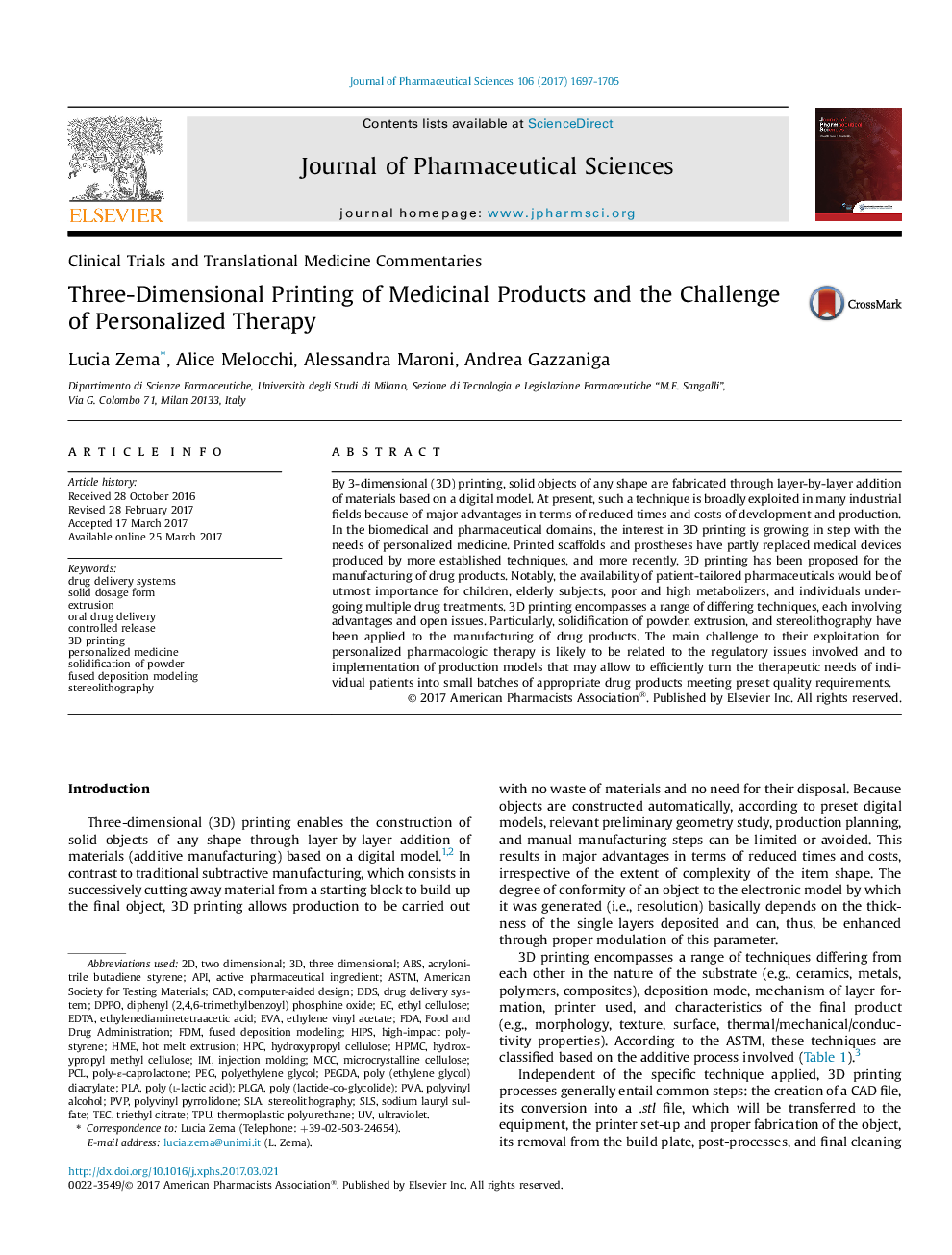| Article ID | Journal | Published Year | Pages | File Type |
|---|---|---|---|---|
| 8514043 | Journal of Pharmaceutical Sciences | 2017 | 9 Pages |
Abstract
By 3-dimensional (3D) printing, solid objects of any shape are fabricated through layer-by-layer addition of materials based on a digital model. At present, such a technique is broadly exploited in many industrial fields because of major advantages in terms of reduced times and costs of development and production. In the biomedical and pharmaceutical domains, the interest in 3D printing is growing in step with the needs of personalized medicine. Printed scaffolds and prostheses have partly replaced medical devices produced by more established techniques, and more recently, 3D printing has been proposed for the manufacturing of drug products. Notably, the availability of patient-tailored pharmaceuticals would be of utmost importance for children, elderly subjects, poor and high metabolizers, and individuals undergoing multiple drug treatments. 3D printing encompasses a range of differing techniques, each involving advantages and open issues. Particularly, solidification of powder, extrusion, and stereolithography have been applied to the manufacturing of drug products. The main challenge to their exploitation for personalized pharmacologic therapy is likely to be related to the regulatory issues involved and to implementation of production models that may allow to efficiently turn the therapeutic needs of individual patients into small batches of appropriate drug products meeting preset quality requirements.
Keywords
PVASLAFDMTECPLAEVASLSHMEDDSAPIASTMABSPVPHPCPCLFDAHPMCMCCPLGATPUHIPSEthyl celluloseEDTAEthylene vinyl acetateEthylenediaminetetraacetic acidacrylonitrile butadiene styreneStereolithographyUltravioletControlled releaseExtrusionHot melt extrusionOral drug deliveryTriethyl citrateAmerican Society for Testing Materialstwo dimensionalFood and Drug Administrationsodium lauryl sulfateMicrocrystalline cellulosethree dimensionalDrug delivery systemDrug delivery systemsCADComputer-aided designSolid dosage formInjection moldingFused Deposition ModelingActive Pharmaceutical IngredientHydroxypropyl celluloseHydroxypropyl methyl cellulose3D printingPersonalized medicinePoly (l-lactic acid)Poly (lactide-co-glycolide)polyethylene glycolHigh-impact polystyreneThermoplastic polyurethanepolyvinyl alcoholpolyvinyl pyrrolidonePoly-ε-caprolactonePEGPEGDA
Related Topics
Health Sciences
Pharmacology, Toxicology and Pharmaceutical Science
Drug Discovery
Authors
Lucia Zema, Alice Melocchi, Alessandra Maroni, Andrea Gazzaniga,
